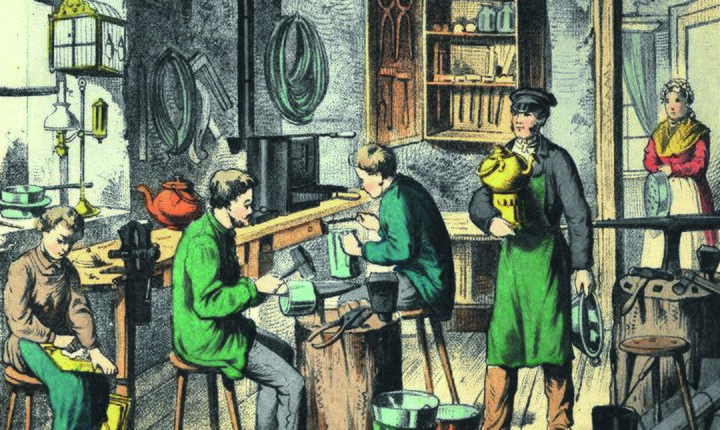
Plumbing is pure culture
The history of water-bearing craftsmanship
The fitter – hardly any other job description has been so influenced over the centuries by the technical and cultural changes that have taken place. Hardly any other profession that so characterises people's hygienic life situation. Hardly any other job that is more deprived of social recognition as the craftsmanship around gas, water – and other media. A chronicle of sanitary culture.
The beginnings of plumbing lie in the roots of civilisation, in the land of two rivers, Mesopotamia. This is where tiles and the utilisation of water were employed for the first time. The fields needed to be watered, the water was then later transported. The Romans covered the topography of the landscape with aqueducts and made dry regions agriculturally useful. It's a big step from the macrocosm of the rivers and seas to the microcosm of home installation. Especially when the Middle Age stands in the way, because a lot of knowledge that had been cultivated by the Romans was lost. It was the monks who preserved the knowledge of the ancients in their records. Hardly anybody knows this better than Klaus Kramer – the plumber's chronologist.
Klaus Kramer is neither a historian nor a fitter. He is a photographer and author with colourful language who has worked his way into the topic. And he has found sponsor in Klaus Grohe, his former boss at the company Hansgrohe. Kramer purchased showers and bathtubs on his research trips – and used them to furnish the company patriarch's corporate museum: “It was also always important for us to give this branch of technology a sense of purpose and composure. For centuries, sanitary technology was nothing less than the benchmark of a culture.”

The furrows of early history became the Romans' channels and pipes and then the piping systems of the modern age – up to the Potable Water Ordinance which is law in Germany. In all eras, there were technical specialists who made water plannable and useful. Engineers – and craftsmen who looked after the implementation of the plans: they're called tinmen, tinsmiths, plumbers and panel beaters. The appearance of gas and water supply in the 19th century required the separation of the tinsmith's craft into the plumbers and so-called “health technicians”. For the latter group, the stylishly French neologism “Installateur” (fitter) was coined in 1880s.
Potable water from the pipe isn't a given
The fitter brought the bathroom into the communal home and established a firm career. People got clean in the bathtub and under the shower, the weekly bath became everyday hygiene. Klaus Kramer scratches his beard: “We take all of this for granted. But potable water still isn't a given in many places around the world even today. Just like the toilet or a shower, especially with warm water.”
Knowledge about water supply and disposal continues to fascinate him. As well as the fact that a small shift in technology can cause serious changes in everyday behaviour: “Everyone thinks of the smartphone here. But the old Hans Grohe put the people on their feet while taking a shower with the adjustable shower rail – perhaps even invented showering as we know it today.”

Klaus Kramer – why is it important to know the past behind your own profession?
Kramer: It's a question of self-definition. The sanitary planner or fitter represents an industry that has remained a benchmark of a society's culture right up to the present day. This is a huge, worthy task – far different to when I describe my field of work as gas, water, shi....
And what does that mean for the future?
Kramer: Potable water and hygiene in the bathroom and toilet are gaining central importance for a global population that is heading towards ten billion strong. Big challenges are coming our way there – with urban water and waste water networks from the 50s and 60s. Of course, the huge masse of pipes in homes is somewhat younger.
Will the fitter still exist as a craftsman in future?
Kramer: A lot was anticipated with the term "Installateur", this neologism from the French language. "Installateur" is a distinguished name for processors and stands for a shift from the manual base production using raw materials to the constructor of industrial finished parts. The profession also continues to change today – further away from the original craftsman's term. Maybe it needs another new name...
